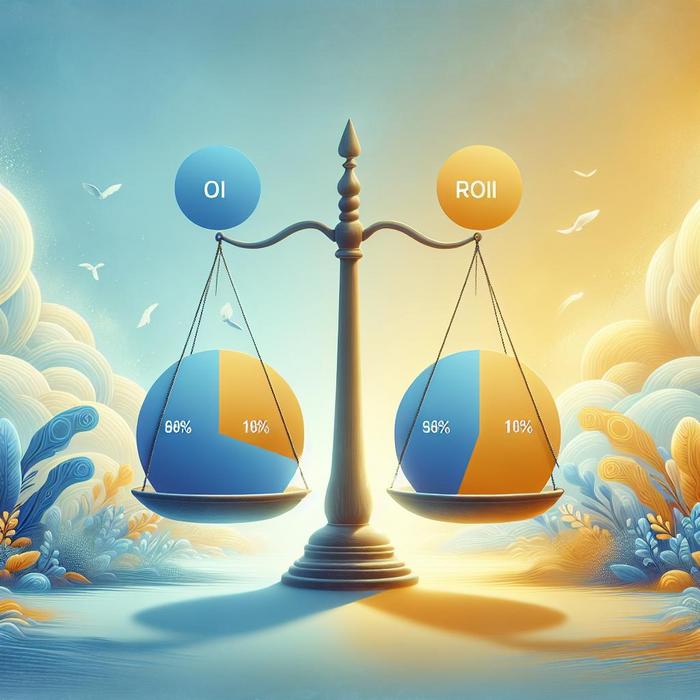The ROI Battlefield: Google Ads and Meta Ads
Where do brands get their best bang for the buck when it comes to digital advertising? Two of the heavyweights in the competition for online ad dollars are undoubtedly Google Ads and Meta Ads. Both platforms offer unique strategies and tools to connect brands with consumers, boost visibility, and drive conversion rates. Yet, when it comes to comparing their return on investment (ROI), the answer isn’t clear-cut.
Deep Diving into Google Ads
Dominating the search engine market, Google gives advertisers a broad canvas to paint their marketing strategies. Google Ads uses data from user search patterns and preferences to help advertisers tailor their campaigns. The real-time LTV push technology assists in setting impression bids, enabling the platform’s native algorithms to function most efficiently.
Implementing strategies like contextual targeting and demographic targeting, Google Ads focuses on catching users at the “moment of intent,” which can potentially lead to instant conversions. This is the appeal of Google Ads – it’s a direct pathway for those actively seeking solutions related to your offerings.
Google’s extensive network and reach are its strong suits, but one potential downside is the level of competition. Brands need to have strong, analytics-driven strategies to ensure their ads stand out.
Meta Ads – Unlocking New Horizons
Meta, previously known as Facebook, caters to a substantial user base and offers deep-diving segmentation tools (source). These resources provide the chance to micro-target audiences based on interests, online behavior, and demographics.
What sets Meta apart is its social nature. Advertising on this platform is less about catching people in the moment of intent and more about creating and fostering relationships. It’s about cultivating an online community around your brand and leveraging that to foster loyalty and conversions.
The downside to Meta’s approach is that it may take longer to convert users to customers. Brands need to invest time in nurturing these relationships. Yet, for those willing to put in the time, Meta’s ad optimization tools can yield impressive results.
Google Vs. Meta: The ROI Battle
Before diving into direct comparisons, it’s essential to remember that ROI isn’t just about short-term wins. It’s about cultivating sustainable growth, and both platforms offer unique ways to achieve this.
Google Ads is a robust platform for attracting users at the moment of intent. If your strategy leans towards an immediate return, Google may offer a higher likelihood of instant conversions.
However, if your focus is more on long-term brand building and community creation, Meta could provide a higher ROI. Their segmentation tools, combined with the right strategy, can cultivate an engaged audience that contributes to consistent sales over time (source).
In analyzing ad spend waste, it’s been found that using Google’s tools effectively can mitigate the loss considerably (source). With Meta, there’s a unique opportunity to build a loyal customer base that enhances lifetime customer value.
How Other Players Fit in the ROI Spectrum
When considering digital ad spends, other platforms such as TikTok shouldn’t be overlooked (source). Despite being younger, TikTok has quickly risen as a formidable competitor, offering innovative and engaging ways to connect with consumers.
The clash between Google, Meta, TikTok, and others only highlights the importance of a diversified ad strategy. Each platform has its strengths and understanding how to harness them will yield the best results for your brand.
Unearthing the Potential of TikTok Advertising
Rising rapidly in recent years, TikTok has garnered a global user base that surpasses one billion. For brands aiming to engage with a younger, more active demographic, TikTok is a treasure trove.
TikTok brings together two components that make it stand out: user-generated content and viral trends. This blend provides a compelling environment for brands to reach out to its target audiences and build a strong brand personality that is both amusing and relatable.
TikTok’s ad personalization features allow for sophisticated targeting based on user behavior, app activity, and content preferences (source). This provides a remarkable vehicle to form connections and evoke emotional responses, which can act as the bedrock for consistent conversions and solidifying customer relationships.
The primary challenge with TikTok is that it’s still emerging in the ad technology and backend metrics space. While it provides an immense user base and interactive ad formats, it significantly lags behind Meta and Google when it comes to in-depth analytics and reporting capabilities.
Google vs Meta vs TikTok: Drawing the Battle Lines
The best way to assess the effectiveness and ROI of these platforms is by understanding your specific business goals and mapping those goals to the strengths of each platform.
If you’re aiming for immediate conversions by targeting users who are actively seeking your offerings, Google Ads’ superior targeting and robust analytic capabilities might be your best bet.
Alternatively, if you want to foster an online community around your brand and cultivate long-term customer relationships, then Meta’s emphasis on social interactions and engagement can be a powerhouse for your business.
However, if your strategy involves engaging younger demographics with highly interactive content to nurture your brand personality, TikTok can be your winning ticket.
Interpreting Advertising Platform Comparisons
When comparing these three platforms, it’s crucial to remember that each platform caters to different marketing objectives and audience demographics. The apparent winner from a surface comparison might not necessarily yield the best outcomes for your specific marketing objectives.
Google’s massive reach and moment-of-intent targeting can deliver immediate results, but this could entail higher competition and potential ad spend waste. Conversely, Meta’s community-building strategy typically requires a longer gestation period in terms of conversions, but it offers the potential for higher customer lifetime values. On the other hand, TikTok allows brands to leverage viral trends and interactive content to reach younger demographics, albeit with less robust analytics and reporting tools.
Making comparisons between Google, Meta, and TikTok ads requires vigilance and careful evaluation. Each platform offers unique ways to improve your ROI and drive business growth, but what works best may depend on your business goals, target audience, and how you leverage the resources offered by each platform.
Savvy brands will perpetually review and refine their strategies. Instead of placing all bets on one platform, consider using a blend of all three and reassessing your strategy based on changing trends and platform findings.
Your best move? Use the best of all worlds to optimize your digital ad strategy – taking advantage of Google’s moment-of-intent targeting, utilising Meta’s community-building tools, or jumping on TikTok’s viral trend bandwagon to create the most compelling advertising narrative for your brand.


